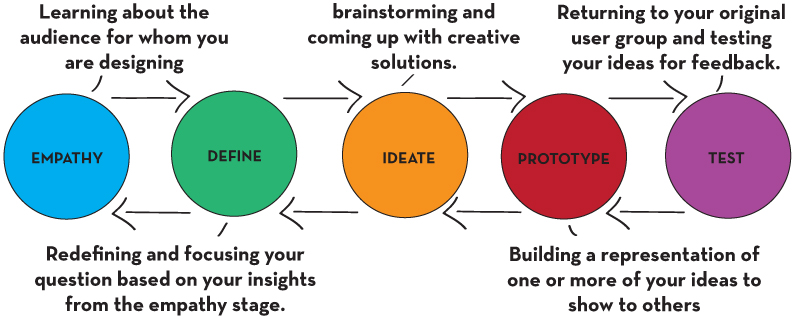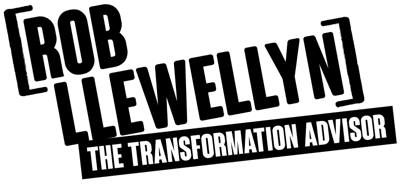Digital Transformation Tools
Strategic digital transformation tools are structured approaches to planning and implementing digital transformation within an organisation. Often referred to as frameworks, they provide a systematic and holistic approach to digital transformation, helping organisations to identify key areas of focus, set goals, and develop strategies for achieving those goals.
Why Strategic Digital Transformation Tools are Important
Digital transformation tools are important because they help businesses and organisations to streamline and optimise their digital transformation efforts. These tools can range from project management software and data analytics tools to cloud computing platforms and artificial intelligence solutions.
By using digital transformation tools, businesses can more effectively manage their digital transformation initiatives, track progress, and gain insights that can help them make data-driven decisions. In addition, these tools can help businesses to stay competitive in a constantly evolving digital landscape and deliver better products and services to customers.
Executives striving to remain competitive in the digital economy need to invest more in digital business transformation tools and capabilities.
Traditional and New Business Tools
Digital transformation tools are the digital economy equivalent of more traditional operational tools that have served managers well over the last two decades. ITIL, CMMI, COBIT, TOGAF, PMBoK and others have been invaluable helping organisations adopt standards to work consistently well, and in accordance with international good practices.
But as companies accept the need to transform, and not restrict themselves to creating a better version of the past, they need to learn to leverage new tools that can help them do that. The reality is that while most successful firms are operationally competent, not all realise that the capabilities and tools used to facilitate their operational excellence are different from the capabilities and tools required to facilitate transformational excellence.
Once leaders appreciate that the capabilities and tools that got them to where they are today, are not the same as the ones they need to get them to where they need to be tomorrow, they can begin to invest more appropriately for transformation.
The Digital Transformation Framework below can help leaders appreciate the components and capabilities they need to complement their workforce with – if they want to avoid the transformation pain that many large firms experience.
The Digital Business Transformation Framework

Exploring The Framework
Now let's explore the four layers in the Digital Business Transformation framework.
Business Models
At the tip of the framework we see ‘Business Models', and these define who a company's target customers are, what the organisation’s value proposition is, how the business works and why the business is financially viable. Many companies have grown on the trusty old business models that are rooted in history and bound by process and culture. But to avoid becoming irrelevant in an increasingly changing world, they need to dust off antiquated models and make them fit for purpose in todays digitised environment.
The authors of “The Business Model Navigator” suggest that in future, competition will take place between business models, and not just between products and technologies. They also explain how a company’s business model consists of four dimensions, which are: the customer (Who?), the value proposition (What?), the value chain (How?), and the profit mechanism (Why?) – and that a business model innovation requires significant modification of at least two of the four components.
Core Capabilities and Digital Use Cases
The second layer down the Digital Business Transformation Framework consists of ‘Core Capabilities and Digital Use Cases'. The Digital Capability Framework describes the core capabilities and digital use cases that companies need to consider if they are to approach their digital transformation holistically. Digital marketing and sales channels are the tip of the transformation iceberg, but beneath the surface are other considerations involving the workforce and operational excellence.
The Digital Capability Framework (DCF) is made up of four building blocks, which are:
- Digital Capabilities (DCF Building Block 1)
- Digital Capability Maturity Models (DCF Building Block 2)
- Digital Use Cases (DCF Building Block 3)
- Digital Transformation Roadmaps (DCF Building Block 4)
As shown below, building block 1 consists of three “Digital Enablers” and three “Digital Goals”:
Digital Enablers:
- Innovation Capability,
- Transformation Capability
- IT Excellence
Digital Goals:
- Customer Centricity
- Operational Excellence
- Effective Knowledge Worker
Discover more about the Digital Capability Framework
Innovation Methods
‘Innovation Methods' make up the third later down the Digital Business Transformation Framework. Implementing digital solutions without innovation rarely achieves anything transformational for a business. When innovation is lacking, transformation endeavours often serve to cut costs and introduce efficiencies. The result is ‘small change' as opposed to ‘transformation'. This is why innovation needs to be at the heart of every company's digital business transformation journey and should be among every leader's digital business transformation toolset.
While many innovation methods exist, the illustration above suggests considering four fundamental innovation approaches, which include:
Open Innovation where companies use both internal and external ideas to advance technology with a willingness to consider both internal and external paths to commercialise the company's offerings. Visit OpenInnovation.net
Customer Co-Creation enables new products and services to be enhanced through an active, creative and social collaboration process between companies and customers – superseding the Schumpeterian model where the lone entrepreneur would bring innovations to markets. Read How to Engage Customers in Co-Creation
Innovation Scouting sees specialists tasked with identifying new opportunities for partnership, co-development, licensing, or acquisition. Commercially relevant technologies are more likely to be found if the scouting team comprises a combination of marketing and technical functions.
Design Thinking involves a human-centred approach to innovation that draws from the designer's toolkit to integrate the needs of people, the possibilities of technology, and the requirements for business success (Tim Brown – IDEO).

Discover more routes to Design Thinking knowledge
Download Collaborative Innovation – Transforming Business, Driving Growth
Listen below to the father of open innovation Henry Chesbrough.
Business Transformation Management
While innovation helps us leverage new digital solutions, the planned outcomes cannot be achieved without effective business transformation management. The BBC's failed £100 Million Digital Media Initiative is an example of how big budgets and technology expertise is useless without the right level of business transformation management capability.
The Business Transformation Management Methodology (BTM²) is the world's first holistic and integrated approach to transformation, which is also integrated with the Digital Capability Framework introduced above. It is fundamental to any leader's digital business transformation tools, and consists of four phases and nine transformation management disciplines.
Business Transformation Management Phases
- Envision
- Engage
- Transform
- Optimise
Business Transformation Management Disciplines
- Meta Management
- Strategy Management
- Value Management
- Risk Management
- Project and Programme Management
- Business Process Management
- IT Transformation Management
- Organisational Change Management
- Competence and Training Management
Learn more about the Business Transformation Management Methodology
Digital Business Transformation Tools Conclusion
Disruptive business models enabled by the latest technologies are already transforming industries and markets. This calls for executives to respond more rapidly than ever before, and before they are forced to by the unknown competition which they can't see coming until it suddenly hits them and their bottom line. The Dollar Shave Club did it to Gillette and there are countless other examples.
The companies that are prepared to approach innovation, digitisation and business transformation in a proper manner will do so by engaging transformation leaders that are adept in every area of the Transformation and Innovation Framework illustration shown at the top of this page.
These leaders need to be prepared with a well equipped toolbox of strategic digital business transformation tools that can guide their organisations along every step of the journey. Tools that bring consistency, a common language and effective ways of working into the organisation. While these tools can come in many shapes and sizes, one thing for certain is that if the tools are out of date and blunt, the journey and outcomes will disappoint.
The world needs more CEOs to insist their transformation leaders adopt tools that are designed to meet the needs of transformation.
